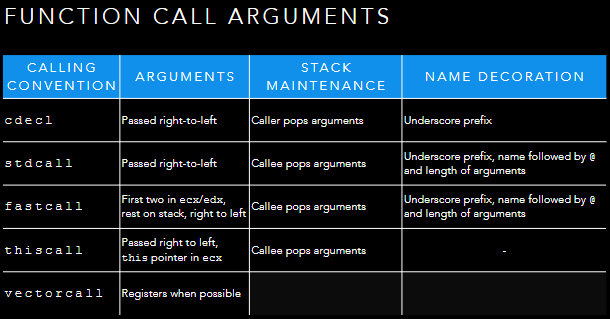Introduction to x86
Introduction
Can look into the assembly and be able to decode the program into what it does. However doesn't work in the real world as x86 adds on a lot more. Various ways to jump to different areas within the program.
SMID make it quick to process images
Basic analysis helps us triage, but to fully understand how it works we need to disassemble it. Reading programs rather than writing them. Disassembling - Reverse-engineering the malwares code to understand what it does
Disassembly
- Turning the opcodes back into the assembly language mnemonics. Easier to get a computer doing it
- Need to generate labels so we know where any branches and subroutine calls go to
Assembly Syntax
Two types of syntax for x86, intel and AT&T. Usual to use Intel for windows world and AT&T for Unix world. Intel has two operands. Instruction then two operand
Machine Code
Machine code is what the CPU executes and is represented as a series of binary opcodes. Types of machine code consists of:
- Basic operations - Maths, comparison, Boolean algebra
- Memory access
- Flow control (jumps and branches)
- Subroutines
High level languages have more features, however, the compiler will generate the same set of machine code instructions each time.
History of x86
Majority of malware written for x86 as most popular CISC CPU and Little endian
It is well-know that the x86 instruction set is baroque, overcomplicated, and redundantly redundant.
8080 - First used in a PC, 8-bit data bus version of the 8086. 16-bit CPU 80286 - added protected mode 80386 - 32-bit version AMD Opteron - 64-bit version
x86 Memory Model
Segmented Memory - Address accessed built up from the value in a segment register, and the address specified in the instruction These days, most OS use a flat memory model
x86 Registers
- Eight 32-bit general purpose registers
- Status Register - EFLAGS
- Instruction Pointer - EIP
- ESP - Stack pointer
- EBP - Base of the stack pointer
al = 8bit
ax = 16bit
eax = 32bit
rax = 64bit
CISC Architecture
- x86 has a register-memory architecture - instructions can operate on a register or directly on memory
- Often more than one way to do things
- Lots of instructions for doing interesting things
x86 Opcode Structure
- Opcodes can vary in length from 1-15 bytes long
- Difficult to fetch from memory, since length is not known till you are three or four bytes into decoding it
eippoints to the first byte of the next instruction, updates as instructionsread
When storing memory, will do it as LSB
Can do everything using the move operand
Instructions can run in memory or on the registers
Function Calls
- x86 supports calling subroutines
- Does this using the
callinstruction - Address of next instruction can be specified
- Relative (to the current instruction)
- Absolute
- Indirectly (the address appointed to by...)
- Once the destination address is calculated
callwill then- Current instruction pointer (
eip/rip) pushed onto the stack - Instruction pointer set to address of start of subroutine
- Current instruction pointer (
- Can return from a subroutine from the stack
- Pops the old instruction pointer from the stack
- Places it into
eip/ripso next instruction carries on aftercall - Optionally, can then add an offset to the stack pointer
The Stack
ret- fetches the return address off the stack- Stack is also used for local variables and arrays
- If malware can control where
retreturns to, it can cause a program to do 'something new' - Often used as a vector for initially executing malware code
- Two mechanisms used
- Cause the stack to be overwritten with the code we want to execute
- Return-oriented programming
Function Call Arguments
- Place arguments on the stack
- Caller and callee need to agree on the arguments passed
- Return values passed in
eax/rax

Most C compilers will compile a function prologue at the start of the program
Pushed the current value of
ebpSets
ebpto the value ofespAllocate space for local variables on the stack (using
sub)Preserve registers
At the end of the function, an equivalent epilogue is generated to restore the stack/registers
Side-effect of this is that
ebpcan be used to trace back up the call stack